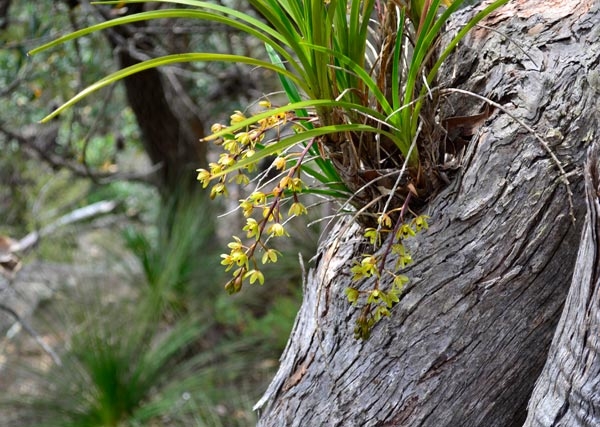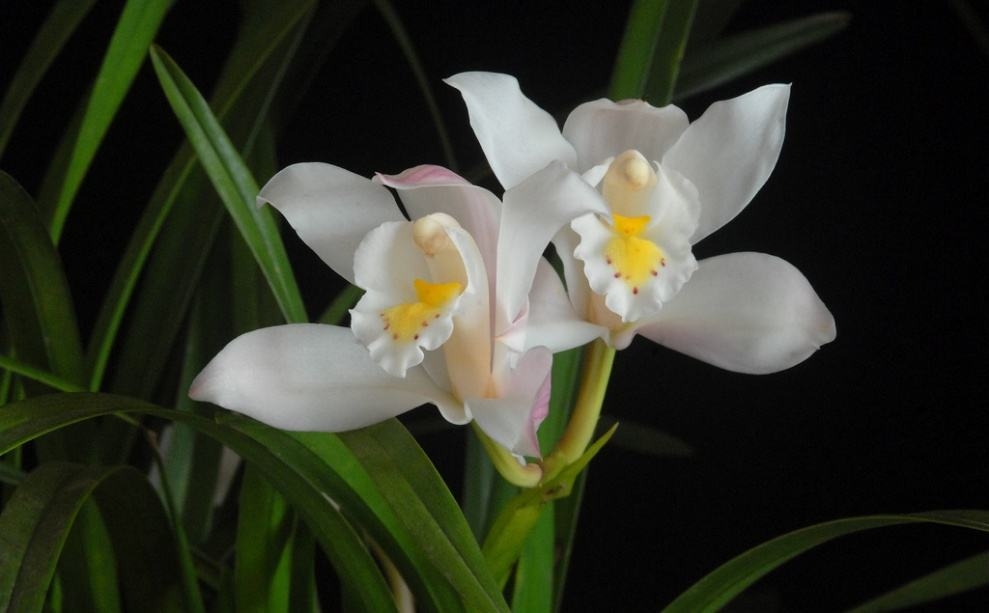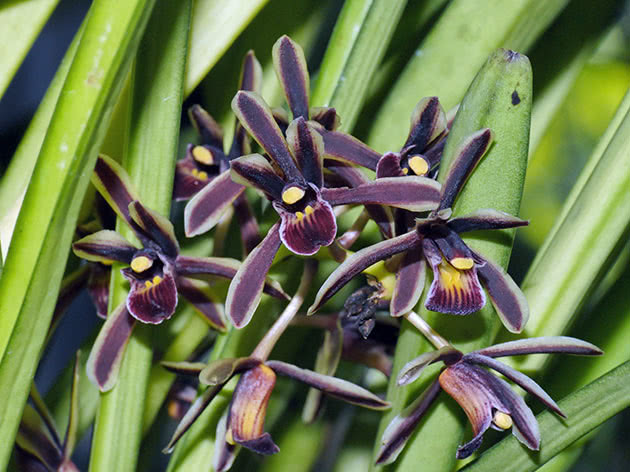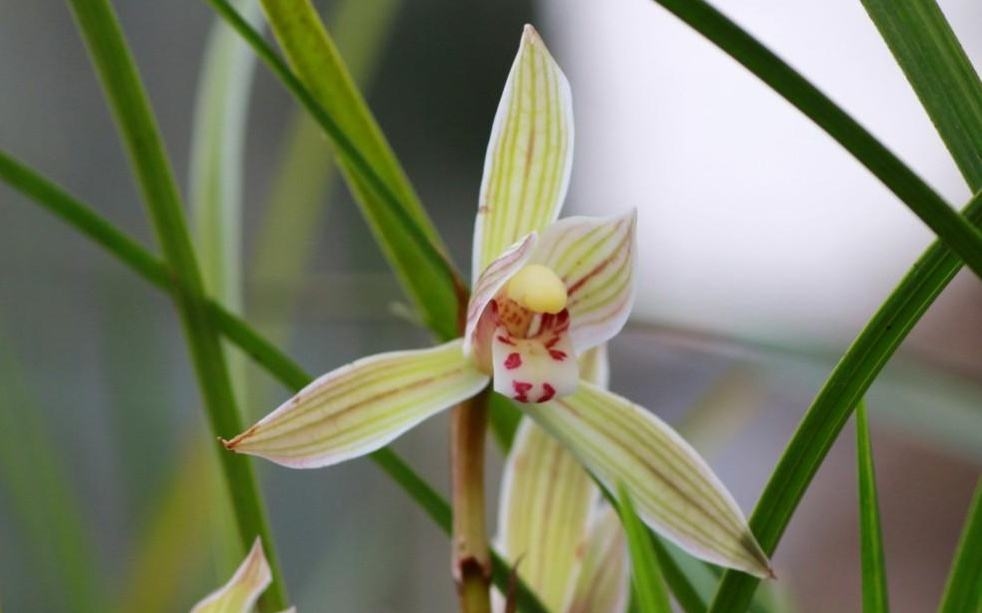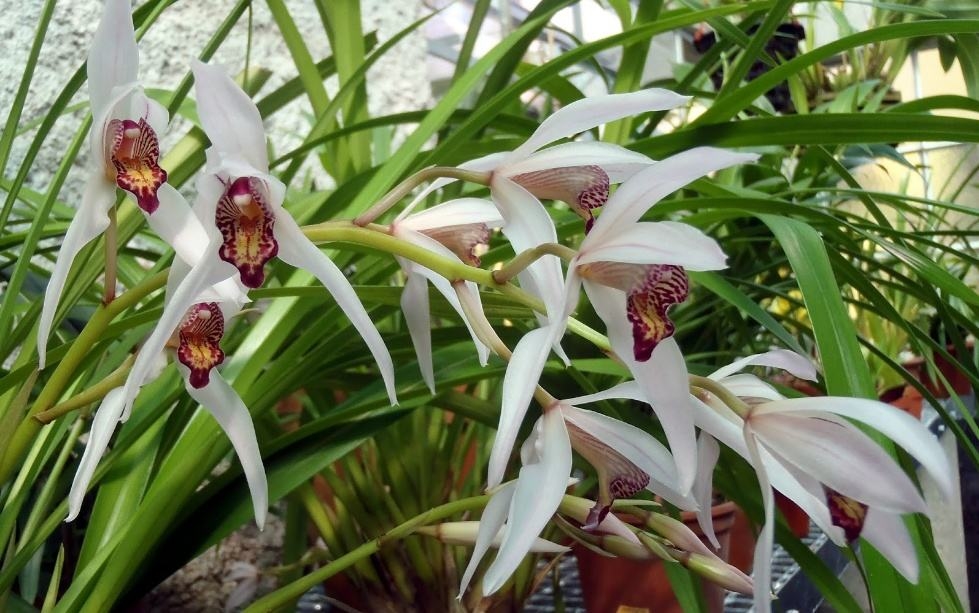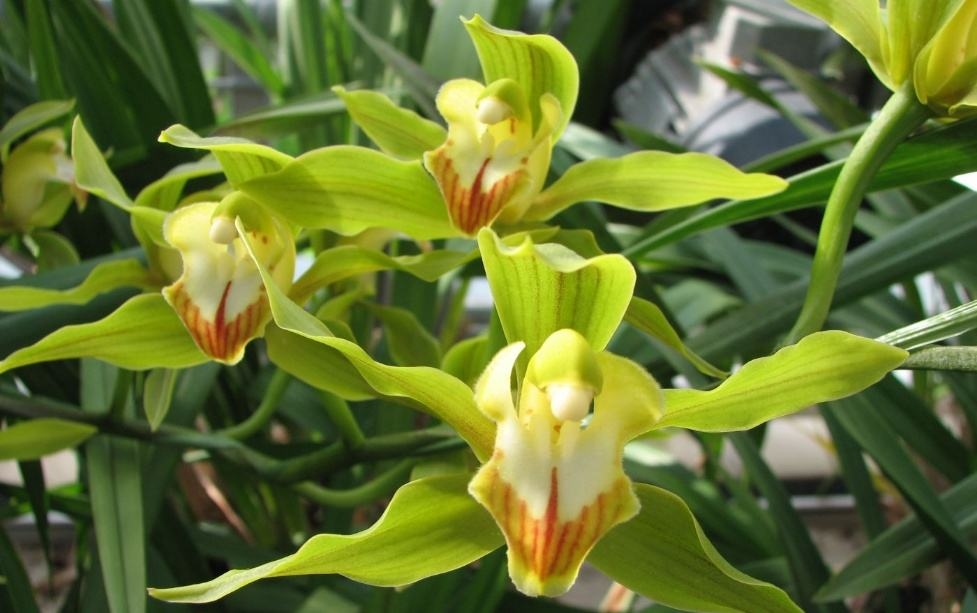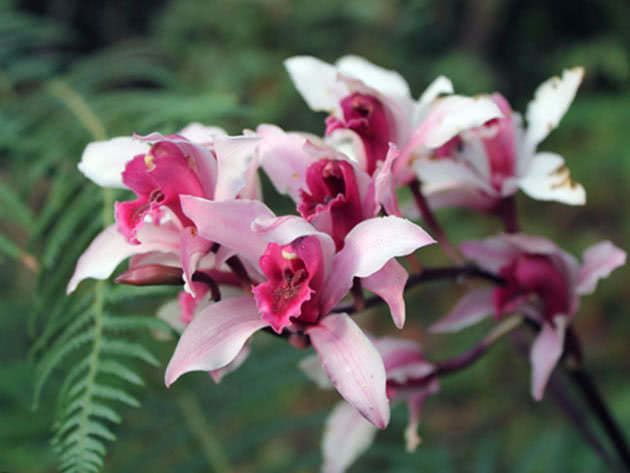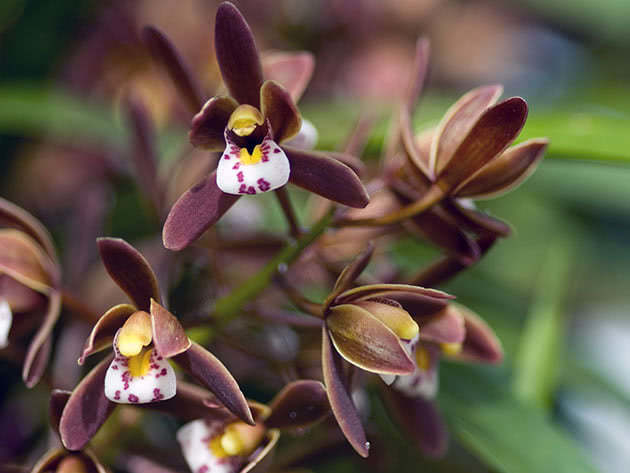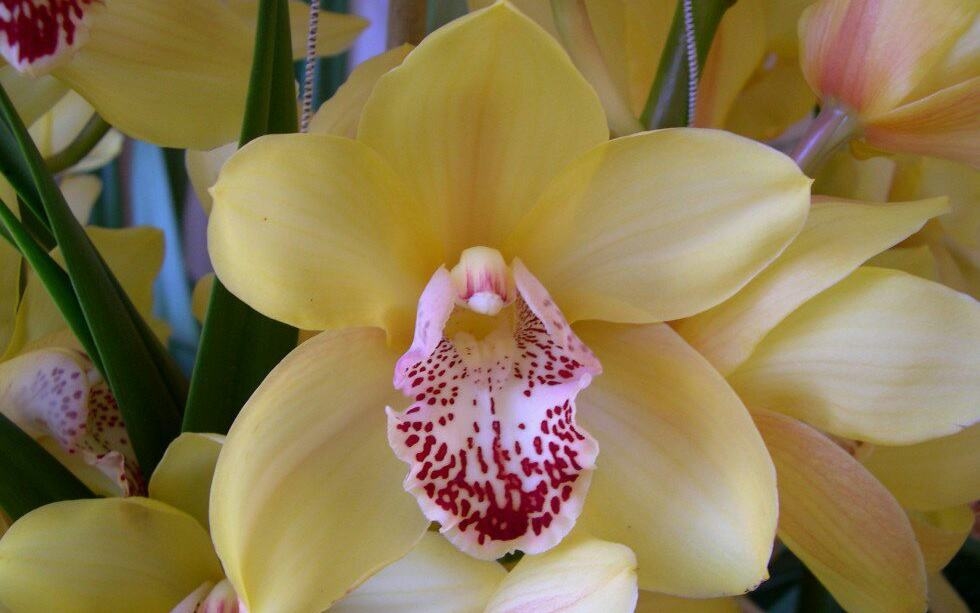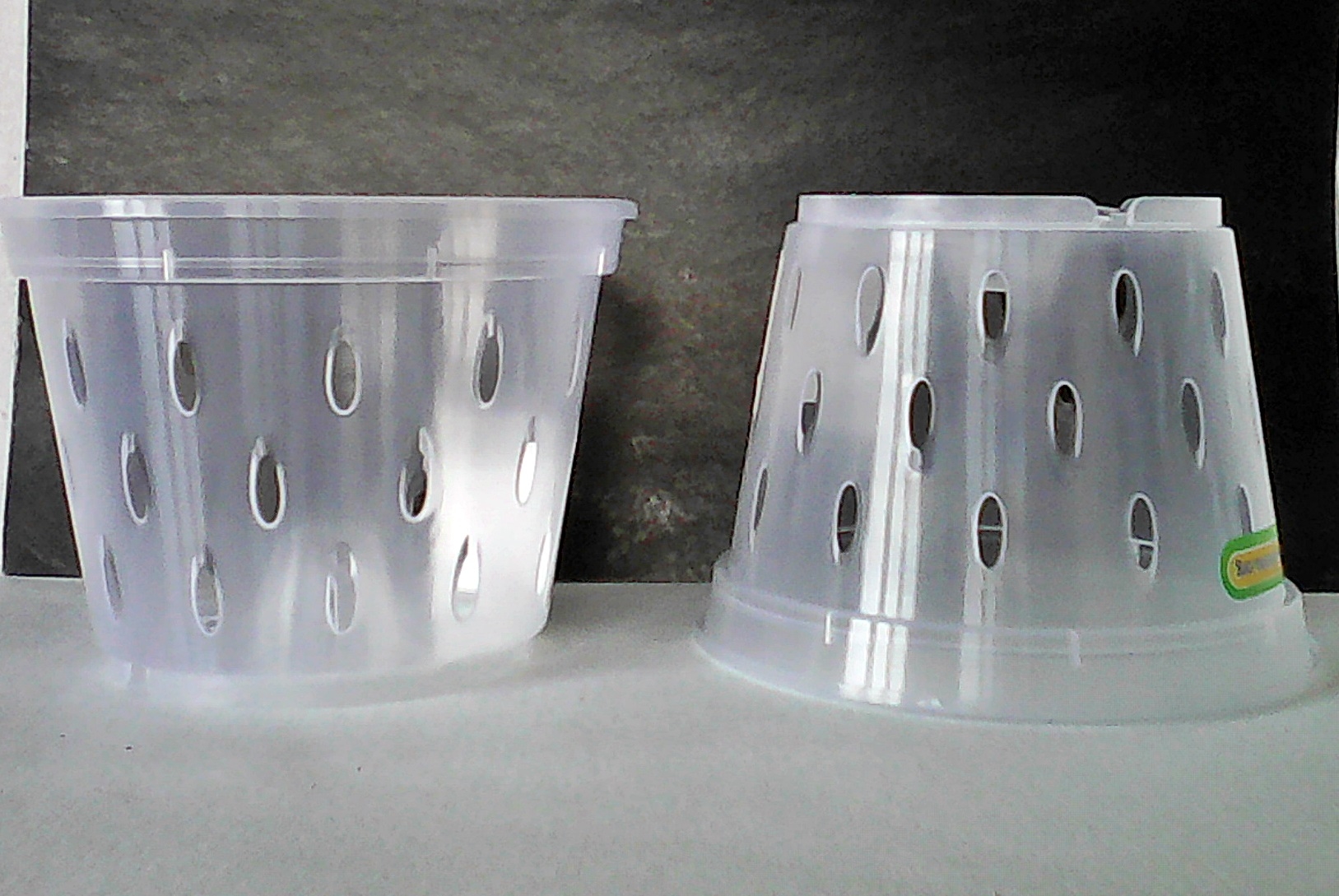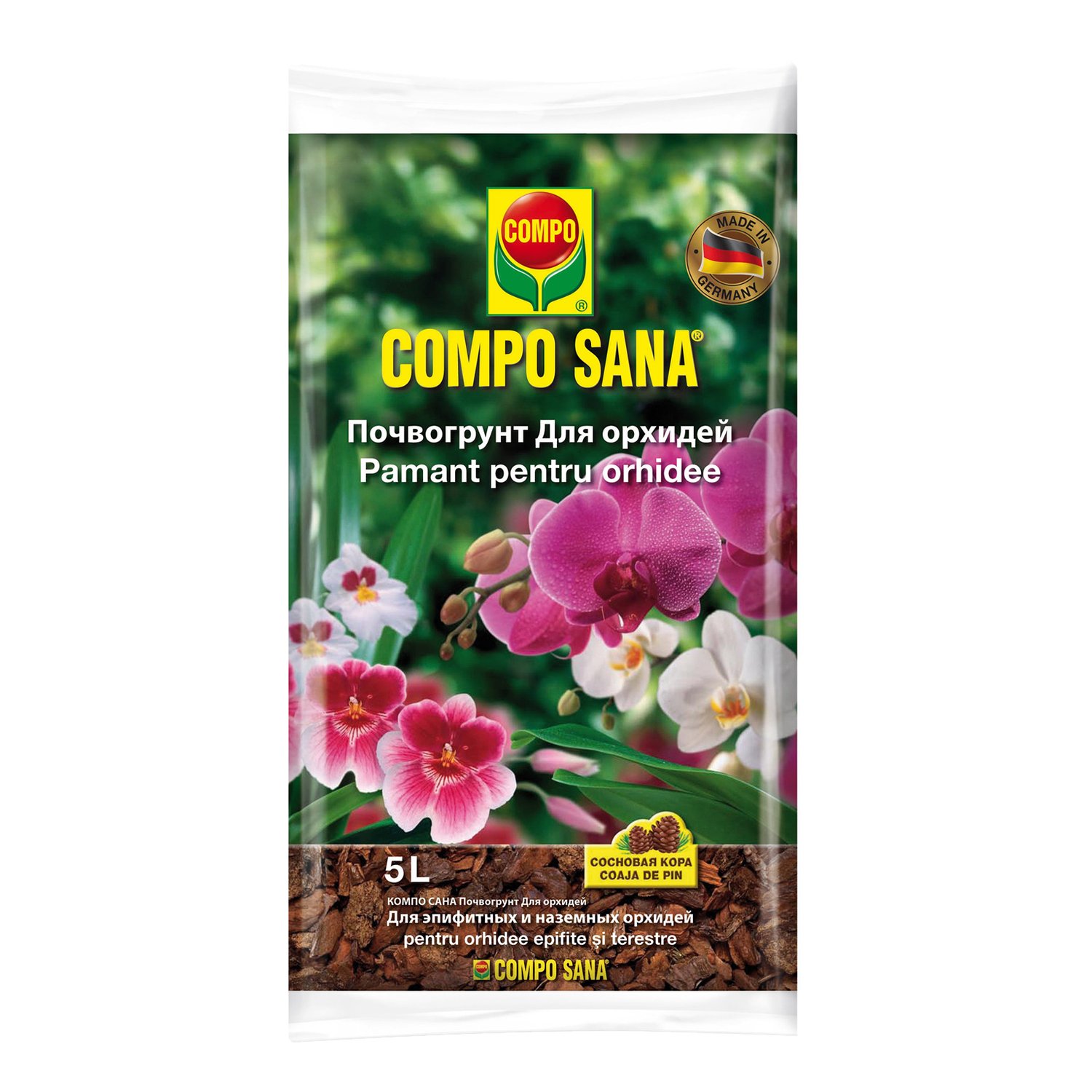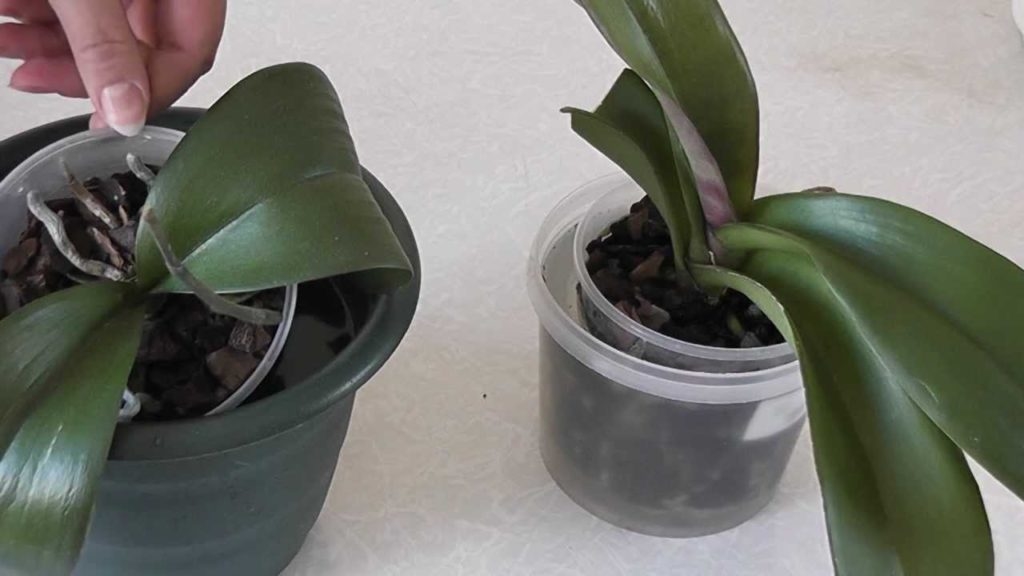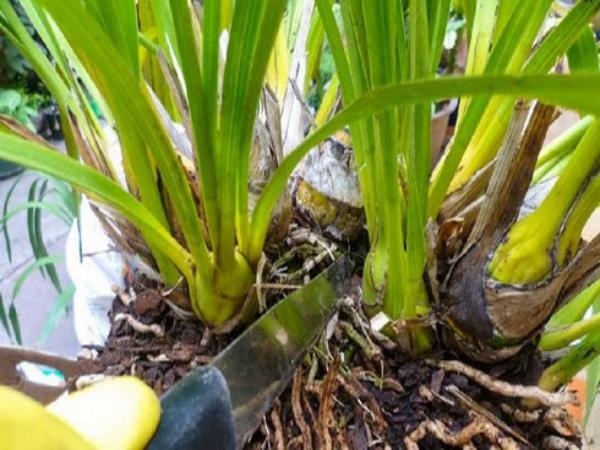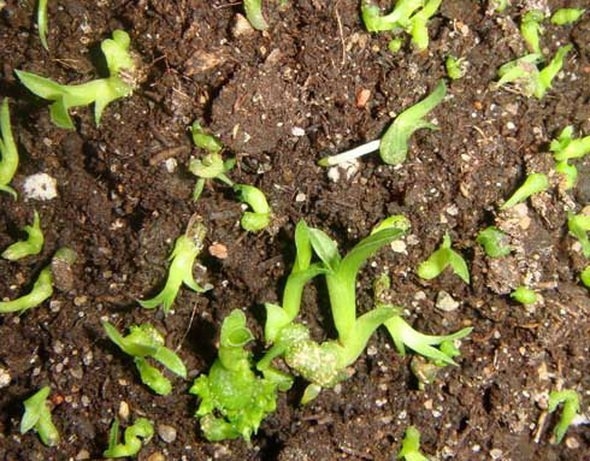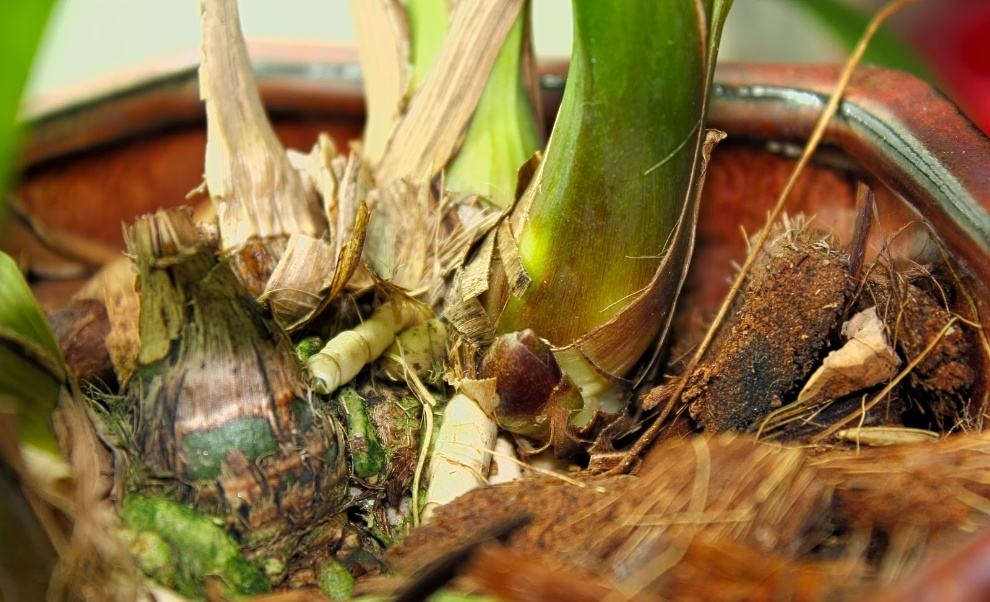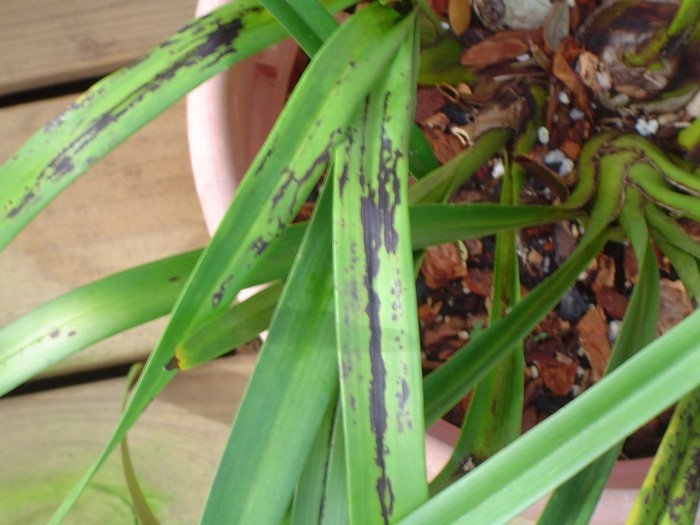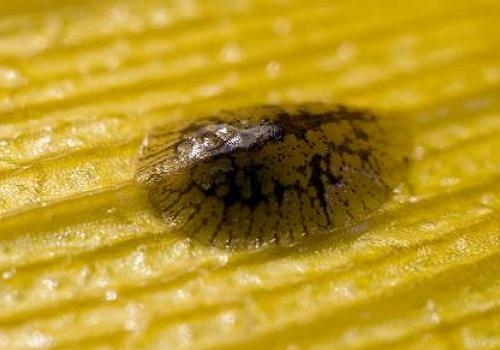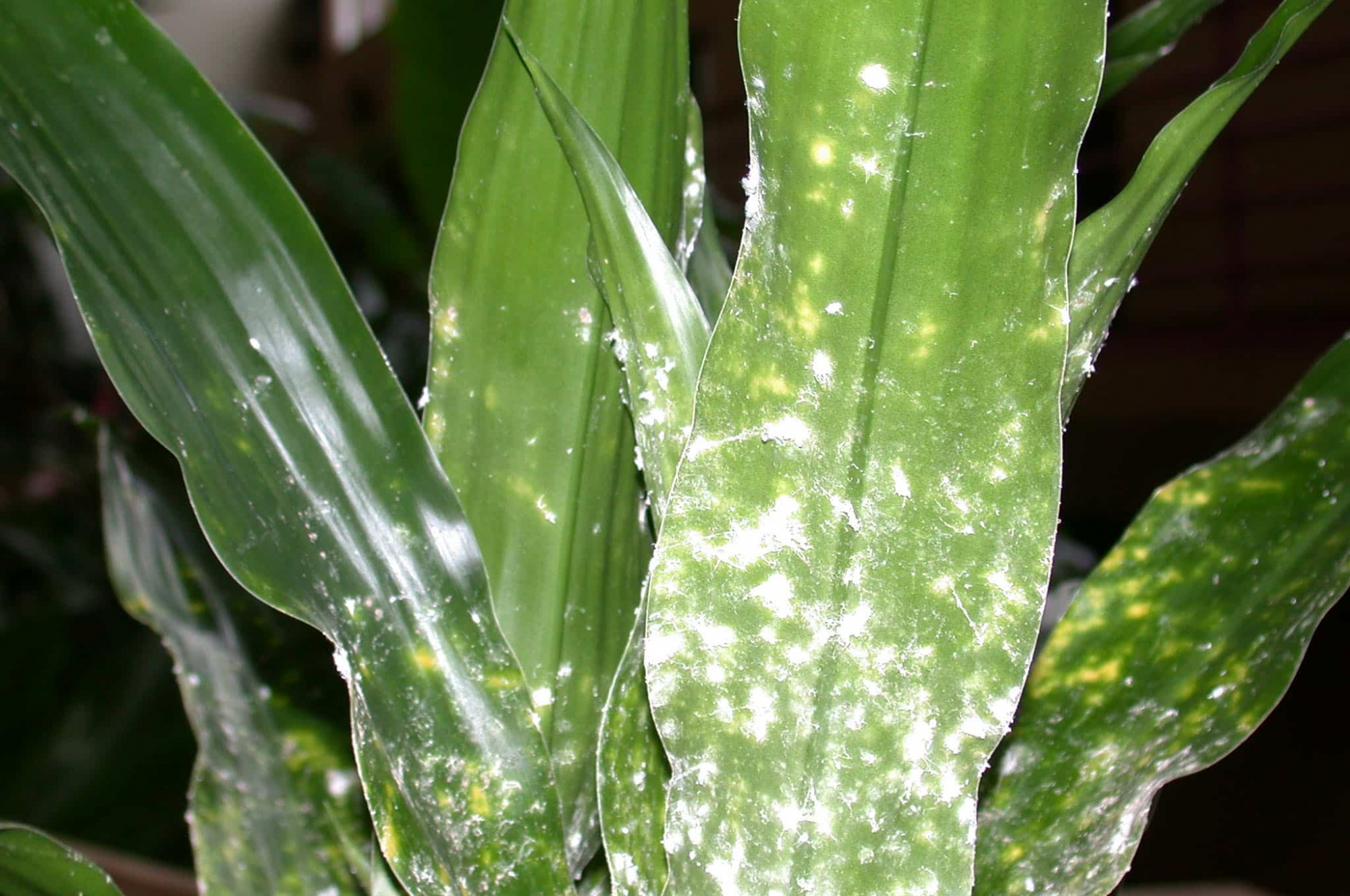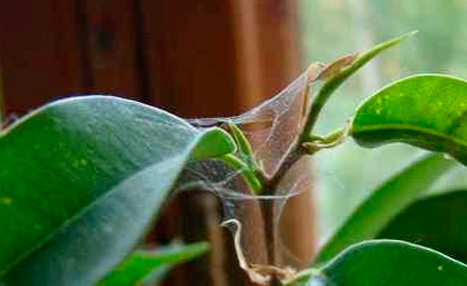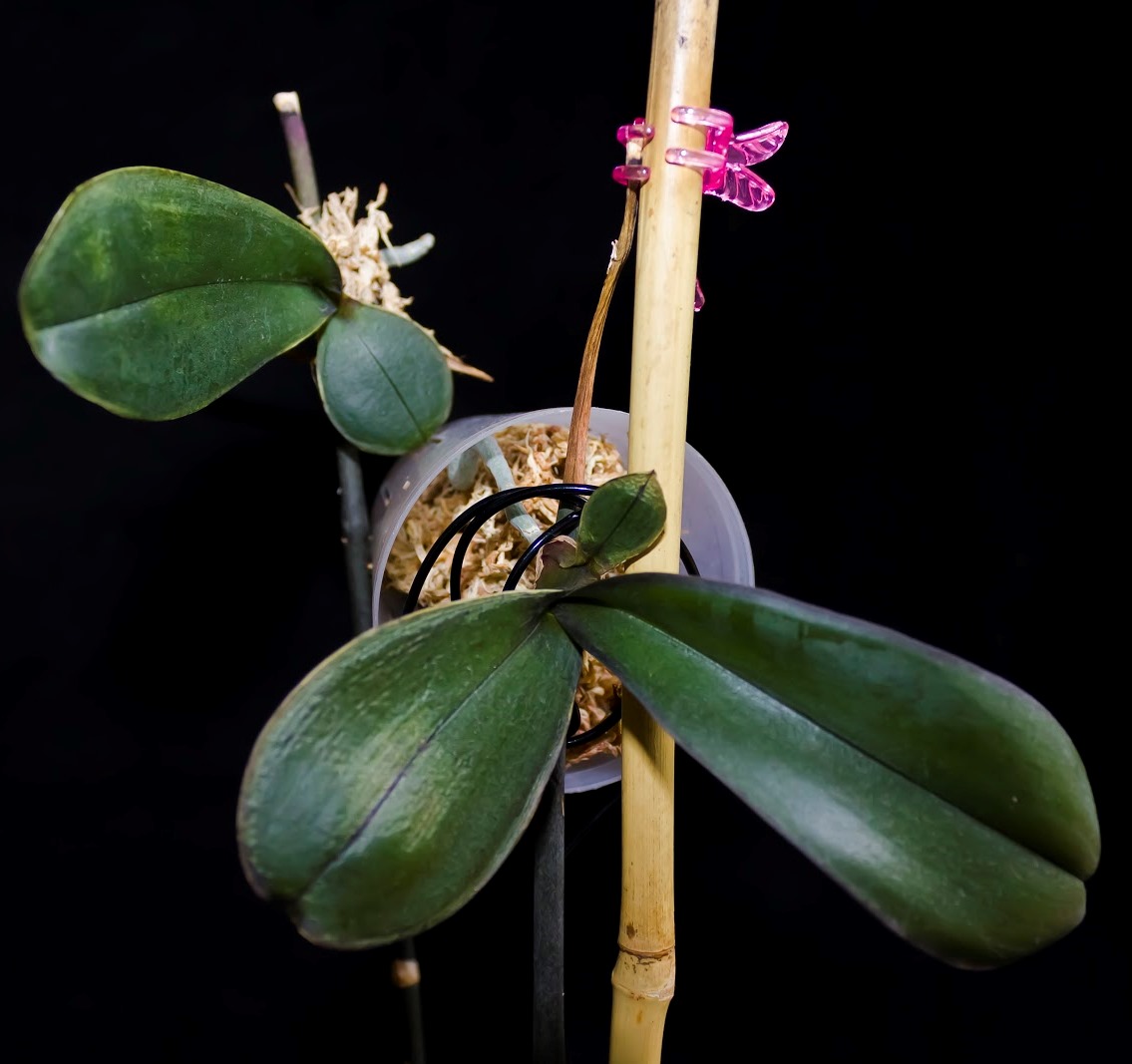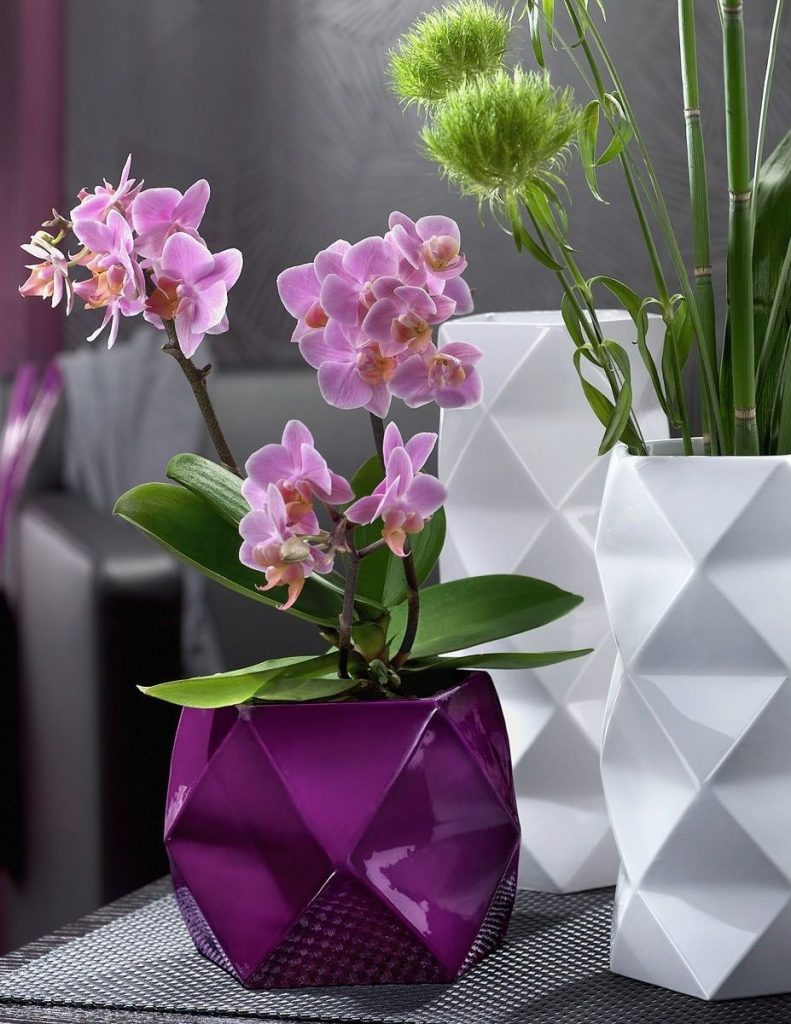Cymbidium are evergreen epiphytes belonging to the Orchid family. Plants in nature are common in Asia and Northern Australia. This type of orchid is a popular indoor flower, as it is highly decorative, a variety of varieties, unpretentious care and beautiful flowers that exude a pleasant aroma. In addition, flowering in these plants lasts long enough.
Content
What it looks like in nature and what is interesting for flower growers
Under natural conditions, the cymbidium grows mainly on trees and rarely on the ground or stones. The orchid reaches a height of no more than 1 m. These plants have oval pseudobulbs, tightly adjacent to each other, and linear leathery leaves, which are pointed at the tips. The color of the petals is varied and ranges from cream to deep red. The flowers reach no more than 13 cm in diameter.
Unlike other orchids, the cymbidium is quite hardy and unpretentious. It is equally well suited to both experienced flower growers and beginners.
Types and varieties with photos
Breeders have bred over 100 varieties of cymbidium that are suitable for growing at home. Most often, flower growers are attracted by the following types:
Cymbidium eburneum ("ivory")
The orchid is distinguished by large petals with a delicate creamy shade. The light scent of its flowers is reminiscent of the scent of lilac.
Aloe leaf cymbidium
This miniature variety reaches a height of no more than 30 cm. The plant stands out for its small flowers, which are yellowish with cream and burgundy hues.
Cymbidium lanceolate
In this species, flowers are no more than 5 cm in diameter. The sepals and petals of the orchid have a greenish tint with a central red vein, and brownish stripes are present on the white lip with green.
Cymbidium Day
The plant has a multi-flowered inflorescence with flowers, the petals of which are white with a dark red vein. The most common Dei varieties are Twelv and Tavoy.
Cymbidium Low
In height, this variety can reach about 1 m, and it differs in large flowers with greenish-yellow petals and a lip painted in a dark crimson shade with a yellowish outline. Lowe's most famous variety is Lilliput.
Cymbidium is wonderful
The flowers of this species have snow-white or pinkish petals with red spots.
Cymbidium dwarf
This variety is rare. The plant is distinguished by flowers with red-brown petals, yellowish edges and a white lip with red spots.
Cymbidium giant
In this variety, the inflorescence consists of 15-17 fragrant yellowish flowers with a creamy lip and burgundy patterns in the form of spots and stripes.
Sword-leaved cymbidium
The inflorescences of this variety consist of 3-9 fragrant flowers, in which the petals are yellowish with burgundy specks at the base. At home, varieties such as Golden Elf, Peter Pan, Lovely Melody are grown.
Landing
After purchasing cymbidium at a flower shop, it must be transplanted into a suitable container. Transparent pots with drainage holes are suitable for orchids. The container should be small and cramped, since it is necessary that the root system does not reach 2 cm to the walls, and 5 cm to the bottom.
Cymbidium can also be planted in a clay pot, but when transplanting it will have to be broken so as not to damage the roots.
Ready-made primer can be purchased at a specialized store. This plant is suitable as a substrate for terrestrial orchids. At home, the soil mixture is prepared from the following components:
- 3 parts of the bark of coniferous trees;
- 2 parts sphagnum moss;
- 1 part of sand, charcoal, perlite and fertilizer from the leaves.
If the temperature in the room where the pot with cymbidium stands is higher than required, then more sphagnum should be added to the soil mixture. At the bottom of the container, it is also necessary to lay out a drainage layer, which can be used as expanded clay or granite stones.
Conditions of detention
In order for the cymbidium to bloom profusely, it must provide optimal conditions:
| Season | Lighting | Optimal temperature conditions | Humidity | Accommodation |
| Spring and summer | The orchid needs to provide bright diffused light, protecting it from direct sunlight. At noon, the plant needs to be shaded | The temperature during the daytime should be within + 20 ... 26 ºС, and at night - from +13 to +15 ºС | The humidity level is above 60%. Place pallets with wet pebbles near the plant pot. Spray the orchid leaves in the heat 3 times a day | East or west window |
| Autumn and winter | Additional artificial lighting required during the winter months | It is advisable that the thermometer does not drop below +16 ºС during the day. At night, the temperature should be within + 10 ... 12 ºС | Place the orchid pot away from heaters. Air humidity must be at least 60% | From early October to late February, it is recommended to keep the pot on the southern windowsill |
Care features
Caring for the cymbidium at home involves the following procedures on a regular basis:
- correct watering;
- timely feeding;
- trimming;
- transfer.
During flowering and dormancy, the orchid requires special care.
Watering
The signal for watering this plant is the color of the root system. As soon as the green roots brighten and acquire a silvery hue, and the condensation on the inner walls of the pot disappears, the soil should be moistened. There are 2 types of watering of the cymbidium:
- Immersion. In this case, the orchid pot must be immersed in a container filled with water. The container should be almost completely immersed in the liquid. It is necessary to keep the orchid in water for no more than 45 minutes.
- Soldering. The orchid should be placed in an empty container and watered on top. It is necessary to water the plant until the liquid reaches almost the top of the container. The soil is completely moistened in about 15 minutes. After soldering, the cymbidium does not need to be watered for 10 days.
It is important to ensure that the liquid does not enter the axils of the leaves covering the pseudobulb. If this could not be avoided, then the drops should be immediately removed with a paper towel.
For watering, you must use filtered liquid. The water temperature in the spring-autumn period should be +26 ºС, and in the winter - from +26 to +30 ºС. The frequency of watering the cymbidium also varies depending on the season:
| Season | Number of waterings |
| Winter | 1 time in 14 days |
| Spring | 1 time in 7 days |
| Summer | 1 time in 7-8 days |
| Autumn | 1 time in 10-12 days |
Fertilization
It is recommended to apply fertilizers with every 3rd watering. The soil should be moist, and preferably use liquid mineral dressing for indoor flowering plants in half concentration.
In the middle of the summer period, less nitrogen-containing fertilizers and more potassium should be applied. There is no need to feed the orchid during flowering.
Pruning
Pruning should be done after the end of the flowering period. The peduncle should be cut at a distance of 2.5 cm above the base. For the procedure, you need to use a disinfected sharp knife or pruner. If you do not prune, then the orchid will bloom again after a while, which can lead to its death.
The peduncle can be broken off by hand to avoid infection. After the procedure, it is necessary to rearrange the orchid pot in a well-lit place.
Transfer
You need to transplant the cymbidium once every 2 years. The procedure is necessary in order to get rid of old bulbs that interfere with the further development of the plant.
Before transplanting, prepare a new container and soil mixture. The procedure is carried out as follows:
- The pot with the plant must be placed in water for an hour so as not to damage the root system during transplantation.
- The orchid must be carefully removed from the old container, holding it by the pseudobulbs.
- The roots must be carefully examined and the ground shaken off. Damaged roots should be cut off.
- The plant must be lowered into a new pot and filled with fresh soil mixture in the space between the roots and the walls of the container.
On the first day after transplanting, the plant does not need to be watered, and fertilization is not recommended for a month.
Bloom
Different types of cymbidium have different flowering times. But under unfavorable conditions, none of the varieties will bloom in due time. The largest flowers appear in an orchid in the 3rd year. At this time, up to 30 pieces can bloom on one plant. The flowering period in cymbidium lasts about 2 months.
To achieve the abundant flowering of this ornamental plant, it is first necessary to provide sufficient lighting. You also need to monitor the difference between day and night temperatures. It is advisable that the thermometer does not rise above +22 ºC during the day. Temperatures should be 4-5 ºC lower than daytime at night. To achieve such differences, in the evening you can take out the pot with the plant to the balcony.
Dormant period
The dormant period begins after the end of flowering, and it is necessary for the cymbidium in order to endure drought or cold. It comes on this plant in October. During this period, the number of waterings should be reduced to 1 time in 2 weeks and the room temperature should be lowered to +10 ºC.
Such favorable conditions help the orchid flower buds to form.
Reproduction methods
Cymbidium can be propagated in 2 ways:
- seeds;
- dividing the bush.
The first method is difficult for beginners, since certain skills are required to carry out the procedure. The plant can also be propagated with the help of old bulbs left over from the transplant. They should be placed in a bag on wet moss and sprayed periodically. After the bulbs have roots, they need to be planted in separate containers and looked after as if they were adult plants.
Dividing the bush
The procedure for dividing the bush can be combined with an orchid transplant so as not to disturb the root system once again. It should be carried out as follows:
- Remove the orchid from the container.
- Divide the plant into parts, leaving 1 old bulb and several green ones on each of them.
- Remove rotten and dry roots, process the cuts with crushed coal, dry.
- Plant the delenki in a suitable soil mixture.
The containers must be placed in a warm place, periodically sprayed and water the plantings moderately.
Seed method
Seed propagation is carried out according to the following scheme:
- The seeds are placed in a prepared moist soil mixture, consisting of crushed moss and leafy soil.
- The room temperature is set within + 22 ... 25 ºC and high humidity (it is advisable to place the plantings in a small greenhouse).
- When shoots appear, they dive.
It is necessary to grow seedlings before the appearance of 4 leaves, after which they can be planted in separate containers and begin to look after, as for adult specimens.
Growing problems
Improper care leads to the following problems when growing cymbidium:
| Problem | Remedy methods |
| Rolling the leaves | It is necessary to feed the plant with magnesium and potassium fertilizers. You should not take the orchid pot out of a warm room into the cold |
| Rotting and yellowing of the bulb | It is necessary to remove the rotten area with a sharp sterile instrument and sprinkle the cut with cinnamon or charcoal. The plant does not need to be watered for a week, and after irrigation, water should be removed from the leaf axils |
| Blackening of leaf tips | The substrate must be dried, and the plant must be watered according to the scheme and shaded from the sun |
| Yellowing of leaves | The orchid should be properly watered and fed |
| Falling buds | You need to feed the orchid with phosphorus or calcium fertilizer |
Diseases and pests
Cymbidium is susceptible to the development of fungal and bacterial diseases when grown indoors. Pests attack this tropical plant infrequently, but the flower is still not immune from infection.
The following diseases and parasites most often affect the orchid:
Cymbidium is one of the most beautiful orchid species that can decorate the interior of a country cottage and city apartment with its flowers. The main thing is to follow all recommendations for the care and maintenance of this ornamental plant.
